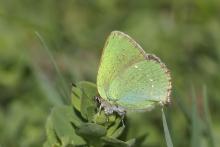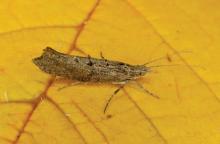
The Sussex Emerald moth may not be a well-known moth that springs to mind but a monitoring project of this rare species is being supported by
This rare moth is currently found in one area, Dungeness in Kent, south-east England where it was discovered in 1950. The Sussex Emerald is an endangered species and lives in vegetated shingle found around the Dungeness Power Stations.
Cemex UK and the four other organisations are working with others like the Ministry of Defence (MoD) and the RSPB (Royal Society for the Protection of Birds) to support a monitoring programme for the moth and to expand and protect the areas of supporting habitat, in the hope of ensuring the continued survival of this rare species.
The monitoring programme was introduced by the wildlife charity Butterfly Conservation (BC) in 2000 and has been carried out annually. BC has found that a decline in the population is in line with a decline in the availability and quality of Wild Carrot, the food plant of the Sussex Emerald’s caterpillar.
Other factors such as increased rabbit grazing and long, cold weather conditions have also had an impact on the survival rate of this species.
BC’s Head of Moth Conservation, Mark Parsons, said: “This delicate species gained a foothold in this country on Dungeness, Kent, in the early 1950s. However, it faces challenges as there have been subtle changes to its habitat in recent years. Dungeness is an extremely important site for a wide range of very scarce species, and the Sussex Emerald is a key feature of this species assemblage. Butterfly Conservation is extremely grateful for the support of Cemex and all the other organisations involved who are working together to try to ensure the long term survival of this moth in this country.”
Andy Scott, Southern Estates and Development Manager, said: “The Sussex Emerald moth may not be well-known but like all the thousands of other species on this planet, it enriches our environment and our world. CEMEX UK has quarrying operations locally and is delighted to be instrumental in helping the moths’ survival through the monitoring programme.”








